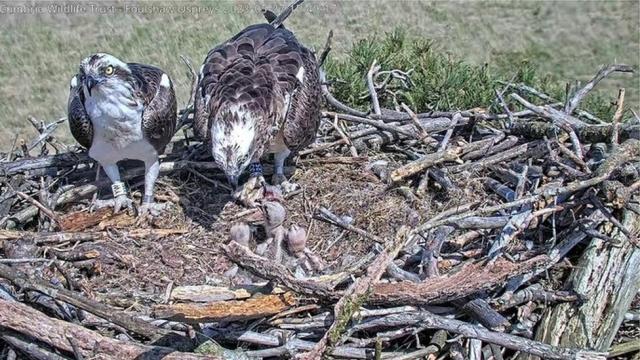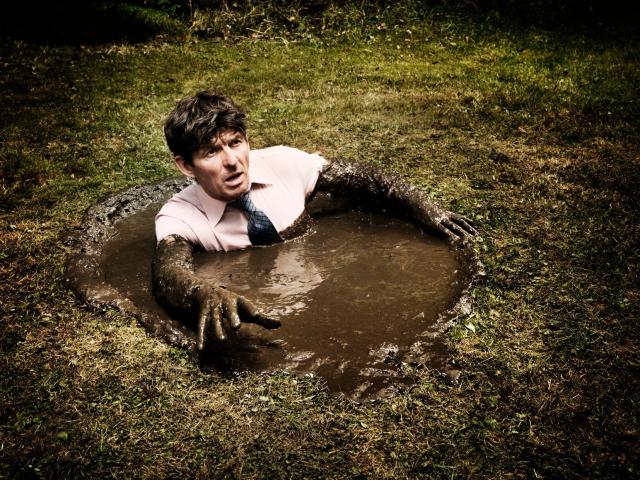Science Daily News | 05 Jun 2023

Views (117)

An albino giant panda thought to be the only one in the world was filmed in the wild in China — take a look
The unique giant panda was spotted in China's Wolong National Nature Reserve in Sichuan Province, per the South China Morning Post.

An all-white giant panda was spotted in China's Wolong National Nature Reserve.
The reserve monitors the panda's movements and routines through motion-activated cameras.
It is thought to be the only albino giant panda in the world.
A rare all-white panda was spotted for the first time since 2019 in a Chinese nature reserve earlier this year.
The panda was first captured by cameras in 2019, after which the reserve set up a team to monitor the panda's movements and routines through motion-activated cameras, SCMP reported.
"It is still unclear whether its gene will be inherited and steadily passed on in the small panda population, and more follow-up research is needed," Li Sheng, a researcher at Peking University, said.
Climate change: How is my country doing on tackling it?
Find out how the world's major economies are doing on cutting their emissions and what lies ahead.

Every year countries pledge to cut their greenhouse gas emissions in an effort to curb the impacts of climate change.
But still global temperatures keep rising.
The question now is whether the world can stop at 1.5C.
On Monday, countries meet for the Bonn climate conference, to discuss their pledges and look ahead to the next big UN climate conference, COP28, which opens in Dubai in November.
So which countries are on track with their climate commitments to help stick to 1.5C and which are not? Find out using out clickable table below.
Additional reporting by Becky Dale and Esme Stallard.
Scientists saw a surge in brain activity in dying patients that could finally help explain mysterious near-death experiences
A recent study found that some patients' brains continued pumping out gamma waves even after their hearts had stopped.

Scientists observed a surge in brain activity in dying patients even after their hearts stopped.
The activity consisted of gamma waves, which are associated with lucid dreams and hallucinations.
Scientists say their observations may help explain bizarre reports of near-death experiences.
The four patients in the recent study were comatose and removed from life support, with their families' permission. At this point, electroencephalogram sensors measured the patients' brain activity as they went into cardiac arrest.
"The discovery of the marked and organized gamma activities in the dying brain suggests that [a near-death experience] is the product of the dying brain, which is activated at death," the lead author of the study, Jimo Borjigin, told Vice.
"As far as I am concerned, our study may be as good as it will ever get for finding neural signatures of near-death consciousness," Borjigin told Vice, adding that the "only thing better than this is to have the patients survive to tell the tale that correlates with the detected neural signatures."
That said, Borjigin aims to collect more data on dying human brains in the future to better understand the human death experience, per Vice.
South Cumbria osprey chicks hatch for 10th year running
The adult birds first nested at Foulshaw Moss Nature Reserve in Witherslack, Cumbria in 2013.

Osprey chicks have hatched at a wetland nature reserve for the tenth year running.
The parent birds, Blue 35 and White YW, first nested at Foulshaw Moss near Witherslack, South Cumbria, in 2013 and raised their first chicks the following year.
They arrived in March after a migration of about 4,000 miles.
Cumbria Wildlife Trust reserves officer Paul Waterhouse said it was a "landmark moment".
Ospreys became extinct in England in 1840 but were reintroduced in the 1990s.
They migrate each year to Africa or Europe before returning to breed.
Mr Waterhouse said the adult ospreys had raised two or three chicks on the site every year.
"Blue 35 and White YW first arrived in 2013 following major habitat restoration at Foulshaw Moss Nature Reserve," he said.
"This large-scale conservation success story saw a 900-acre site, previously drained and used for commercial forestry and farming, being transformed back into the healthy wetland you see now, which is teeming with wildlife."
The nature reserve is also home to other birds of prey including peregrine falcon and marsh harrier.
How to escape quicksand. Whatever you do, don't panic!
Humans can't drown in quicksand, because we float in it. Getting out can be simple if you follow these instructions.

If you get stuck in quicksand, remember it's impossible to drown in the stuff.
Instead, calmly try freeing yourself by gently kicking your legs back and forth.
This should loosen the dense sand around you, allowing you to pull yourself free slowly.
If you find yourself stuck in quicksand, the first thing to remember is not to panic.
Quicksand is not like how Hollywood traditionally portrays it. You're not going to drown.
In fact, most quicksand pools are only a few inches to a few feet deep. Moreover, it's impossible to drown in quicksand because humans float in it. That's because our body's density is lower than the quicksand's, "Extreme Encounters" says.
"In normal sand, grains are packed tightly together to form a rigid mass, with about 25 to 30 percent of the space (voids) between the grains filled with air or water," SciAm reports.
But if the sand's shape is more elongated than spherical, it can increase those voids from 30 percent up to 70 percent.
"This arrangement is similar to a house of cards in that the space between the cards is significantly greater than the space occupied by the cards," per SciAm.
As a result, the sand looks solid on the surface but is very pressure sensitive and can easily collapse, causing the surface to sink beneath your feet.
What makes quicksand so dangerous is its viscosity. Once disturbed, quicksand becomes much more viscous, trapping whatever it envelops. Here's how to get out:
Instead, if possible, try making small back-and-forth motions with your legs, which should loosen the sand around you. Lose your shoes if you have to.
Next, if you're not too deep, you can try lying on your back. The more you distribute your weight across the surface, the harder it will be to sink farther. Then you can try backstroking your way free.
Roll away from the quicksand once you reach solid ground, and you should be clear of the sticky situation.
Another tip is to never enter quicksand territory without a stick or pole. You can rest the pole on the quicksand's surface, ease your weight, and slowly shimmy your way out, per "Extreme Encounters."
Watch the original video here:
A lost medieval city that legend says was swallowed by the sea as punishment for its carnal sins mapped for the first time
The legend of the lost city of Rungholt, in Germany, says a great storm in 1362 destroyed it as revenge for its inhabitants' sins.

The legend says that the city of Rungholt was destroyed as revenge for its inhabitants' sins.
The remains of the "northern Atlantis" have now been charted off the coast of Germany.
Researchers say such finds provide unparalleled insights into the lives of the North Frisian people
Archaeologists have mapped out the lost city of Rungholt for the first time.
So the stories go, the life of abundance led to an immoral life, and the end came around Christmas when a gang of young drunkards tried to force a priest to give a pig the last sacrament at a local inn.
The cleric went to the church and prayed and asked God to punish the young men. He left town the next day, and shortly after, the great storm hit that wiped Rungholt off the face of the Earth.
In medieval legends, the sound of its bell tower could be heard from the depths of the North Sea.
While some historians questioned whether the town ever existed outside myth, new research has uncovered the remains of this "northern Atlantis" in the Wadden Sea, per the report.
Archaeologists from Christian-Albrecht University in Kiel found approximately 1.2 miles series of medieval mounds around an island now known as Südfall after mapping the site with a geophysical survey.
The press release says that investigations into the tidal flats continued to "bring to light significant new finds" and provided unparalleled insights into the lives of the North Frisian people.
But the researchers are working against the clock, as the conditions continually eat away at the remains.
"The medieval settlement remains are already heavily eroded and often only detectable as negative imprints," Hanna Hadler, who works at the Institute of Geography at Mainz University, said.
"So we urgently need to intensify research," she added.
0 Likes
